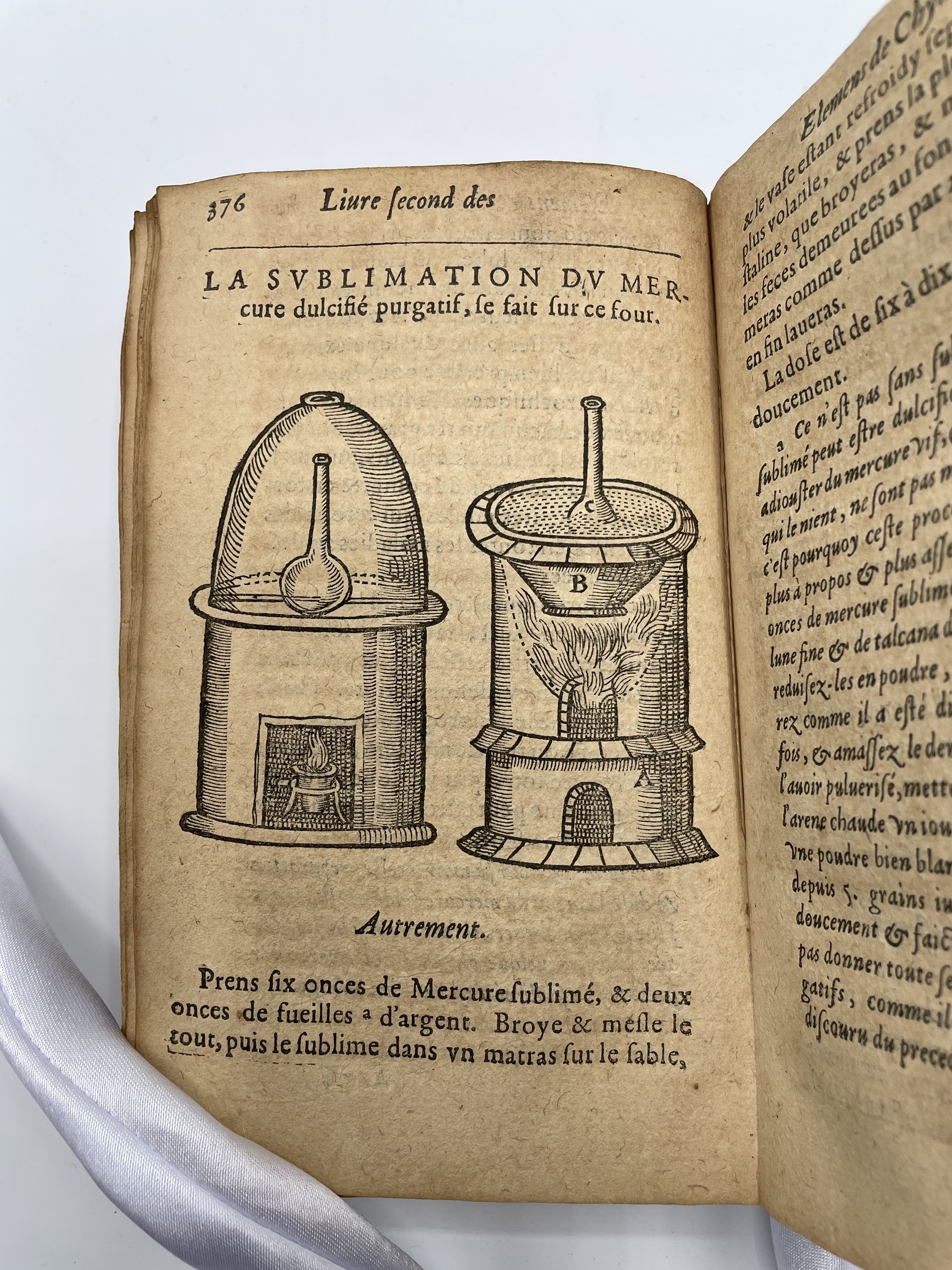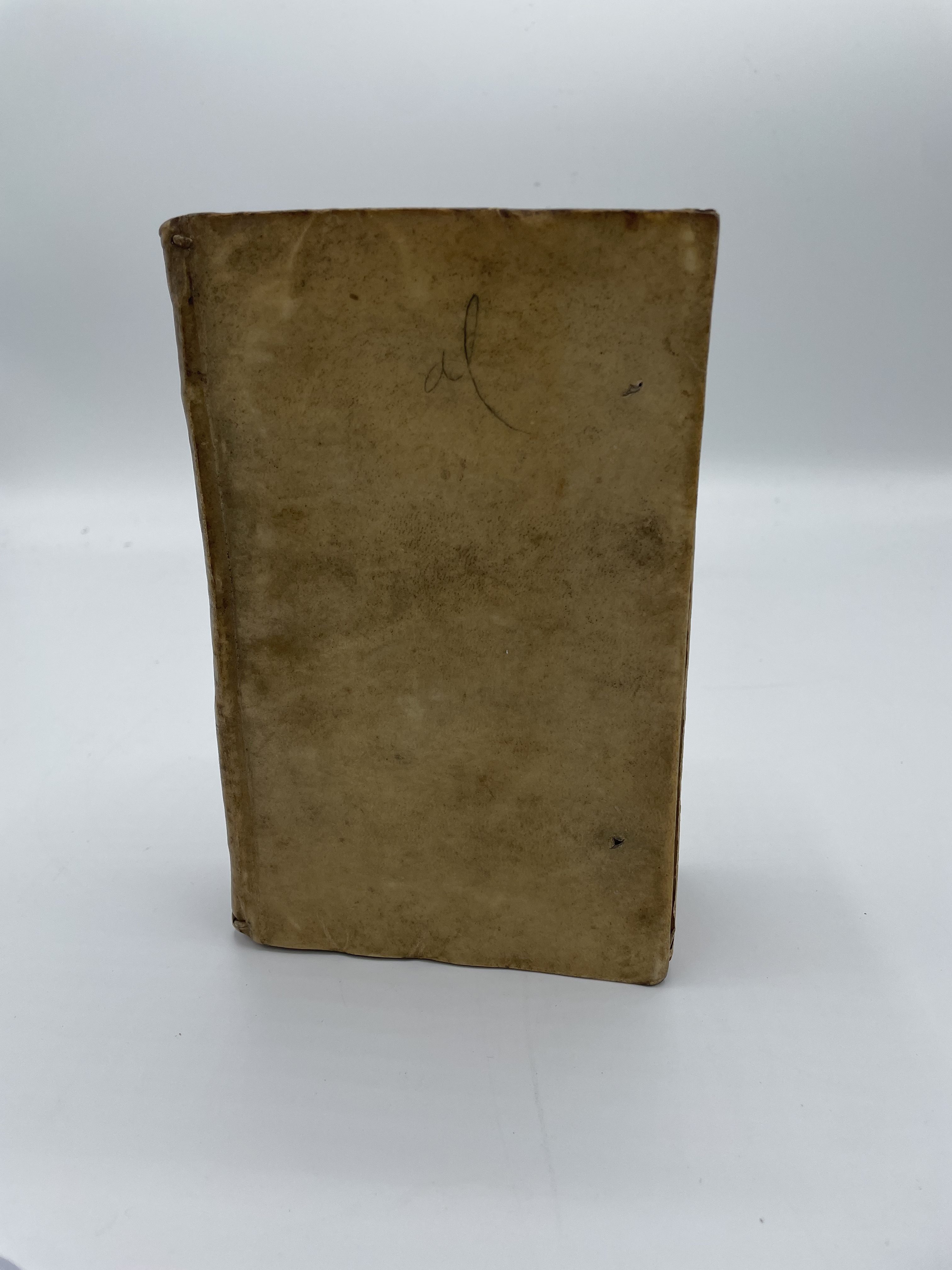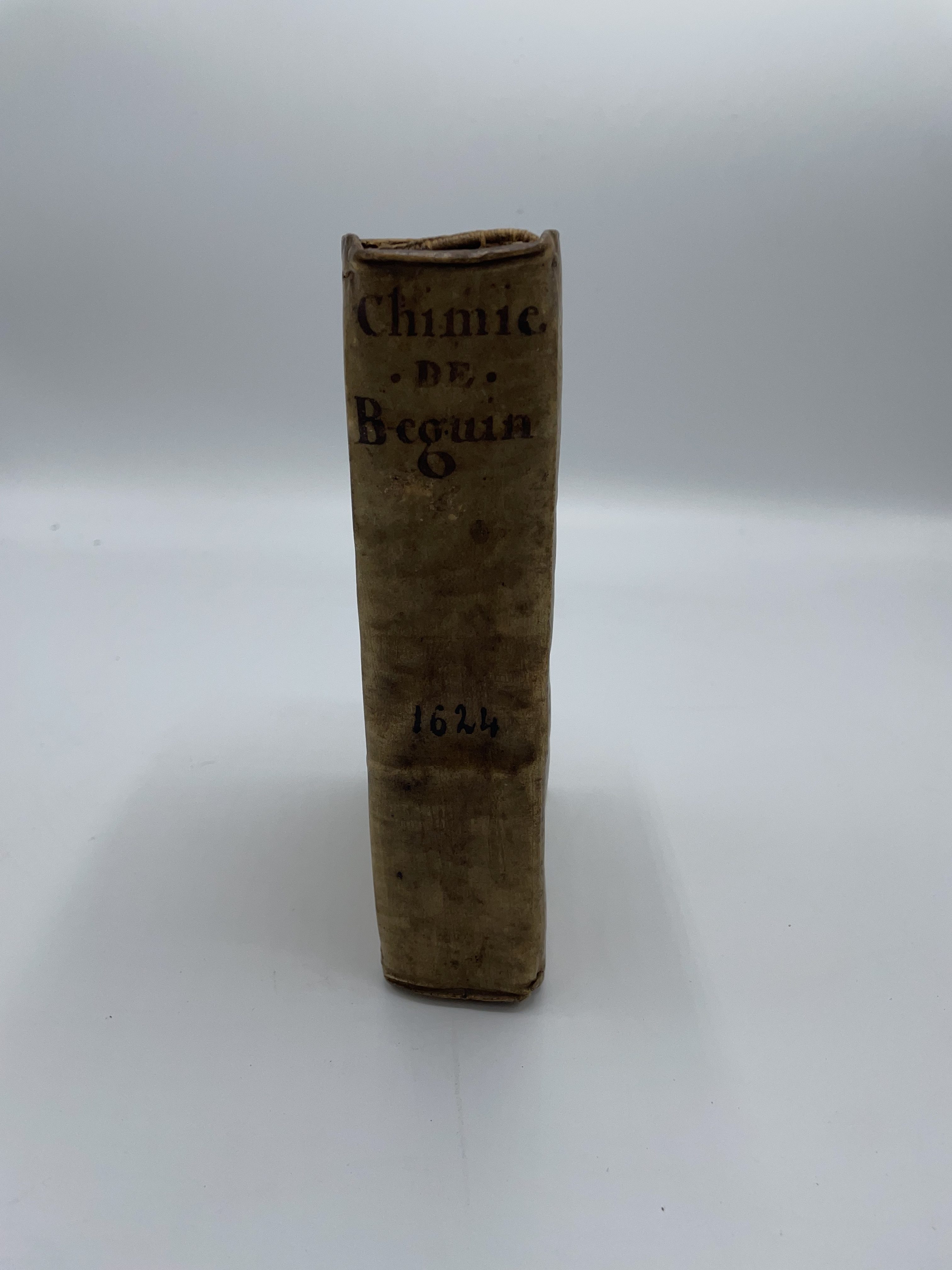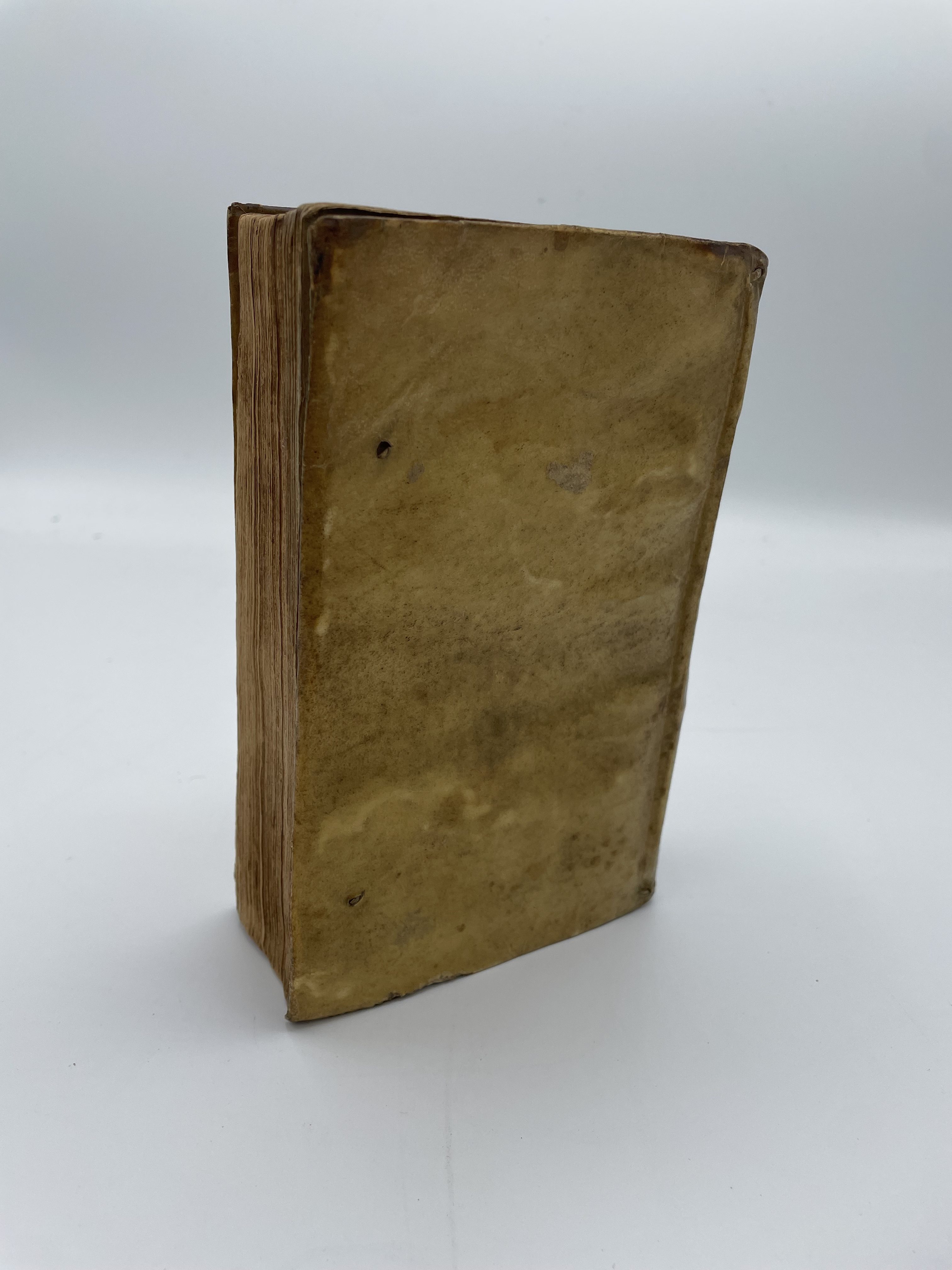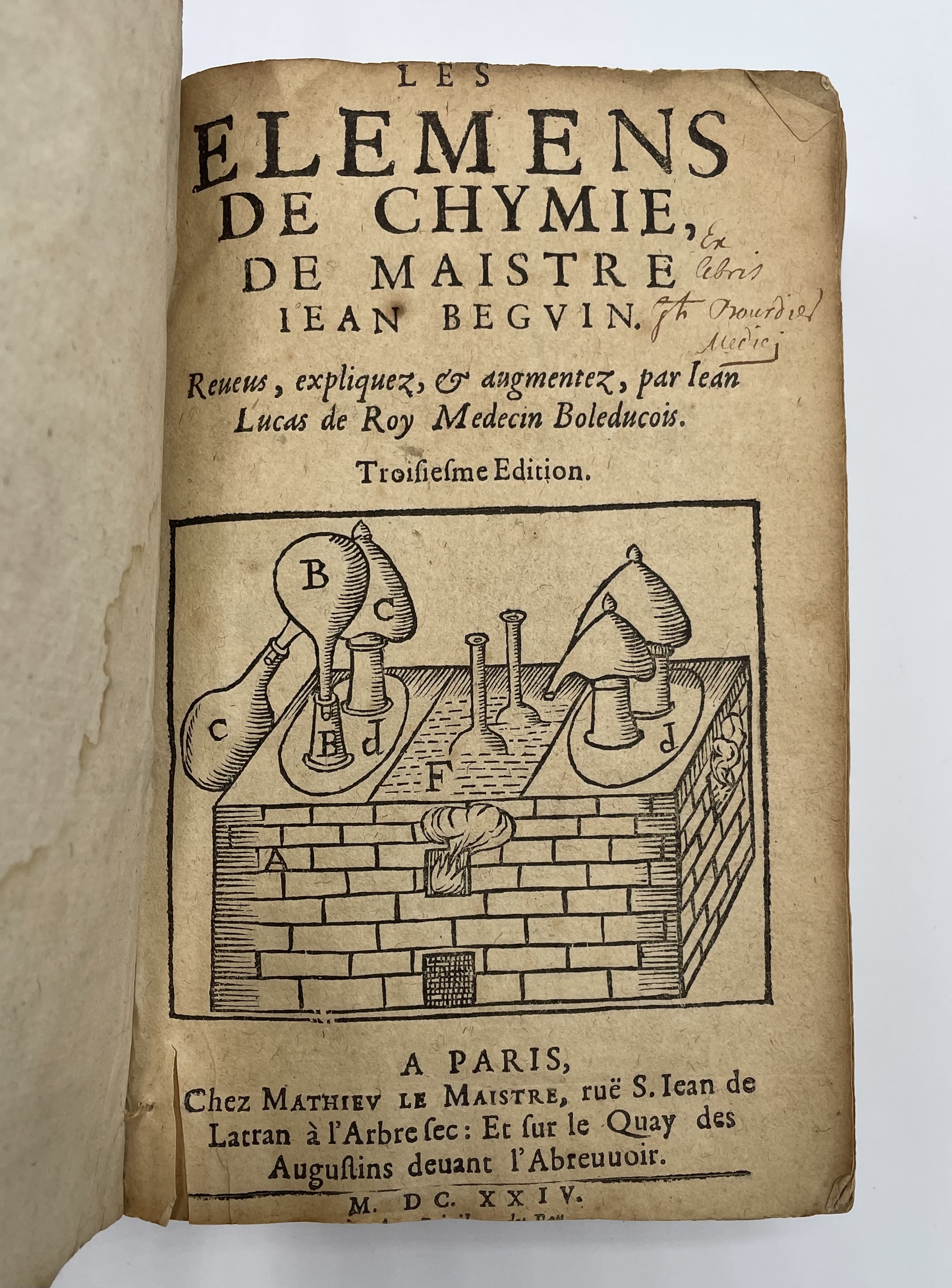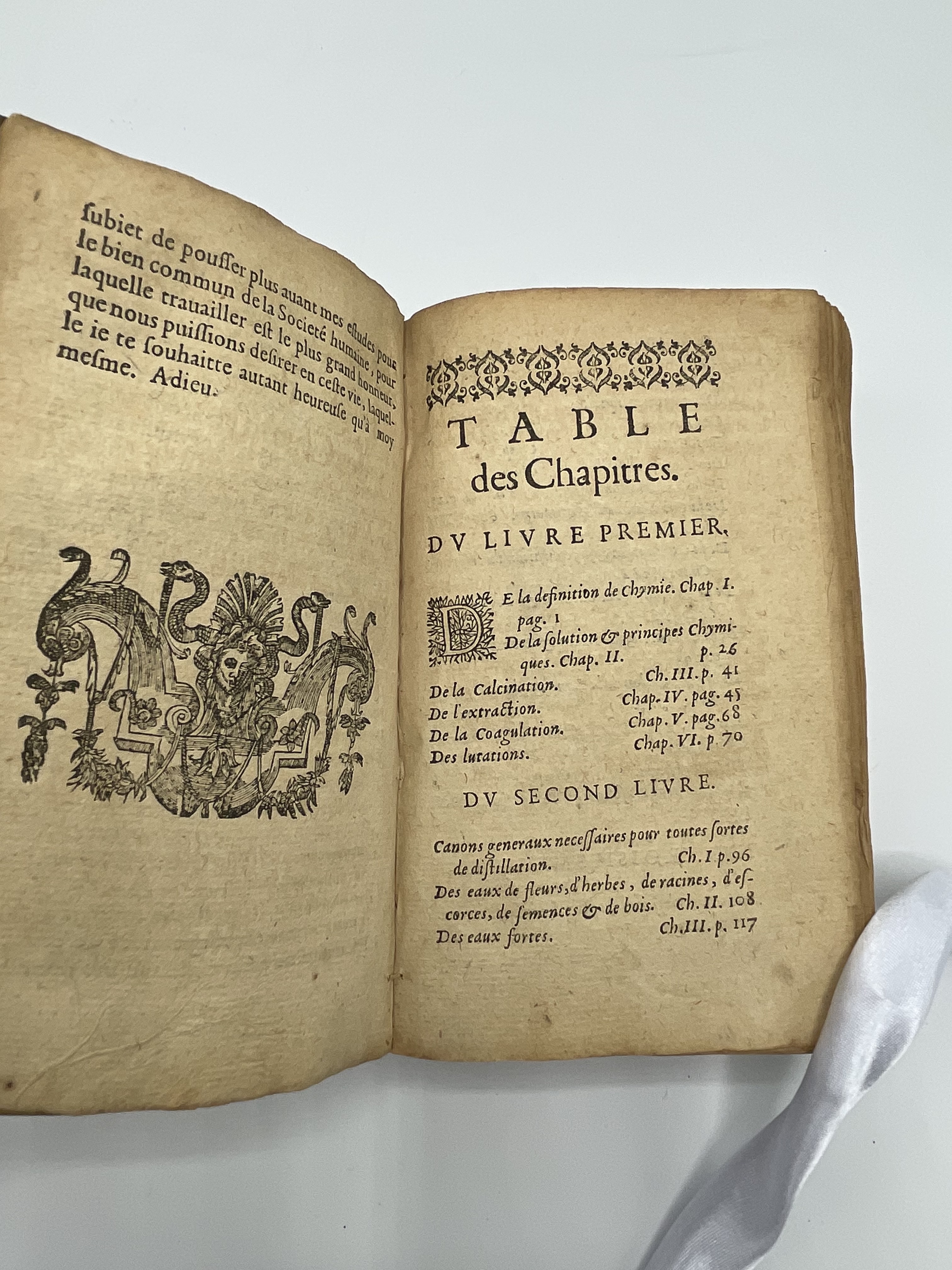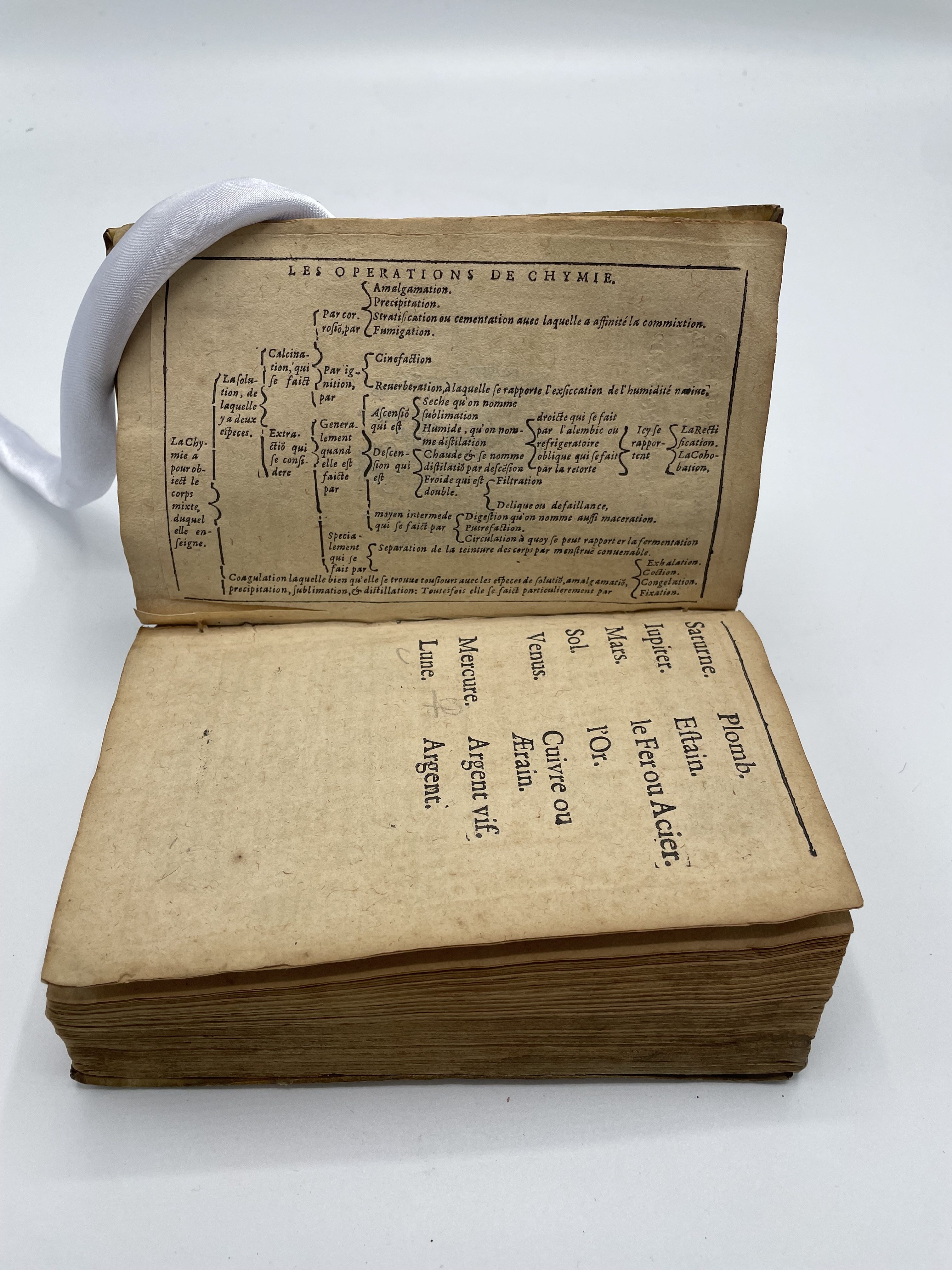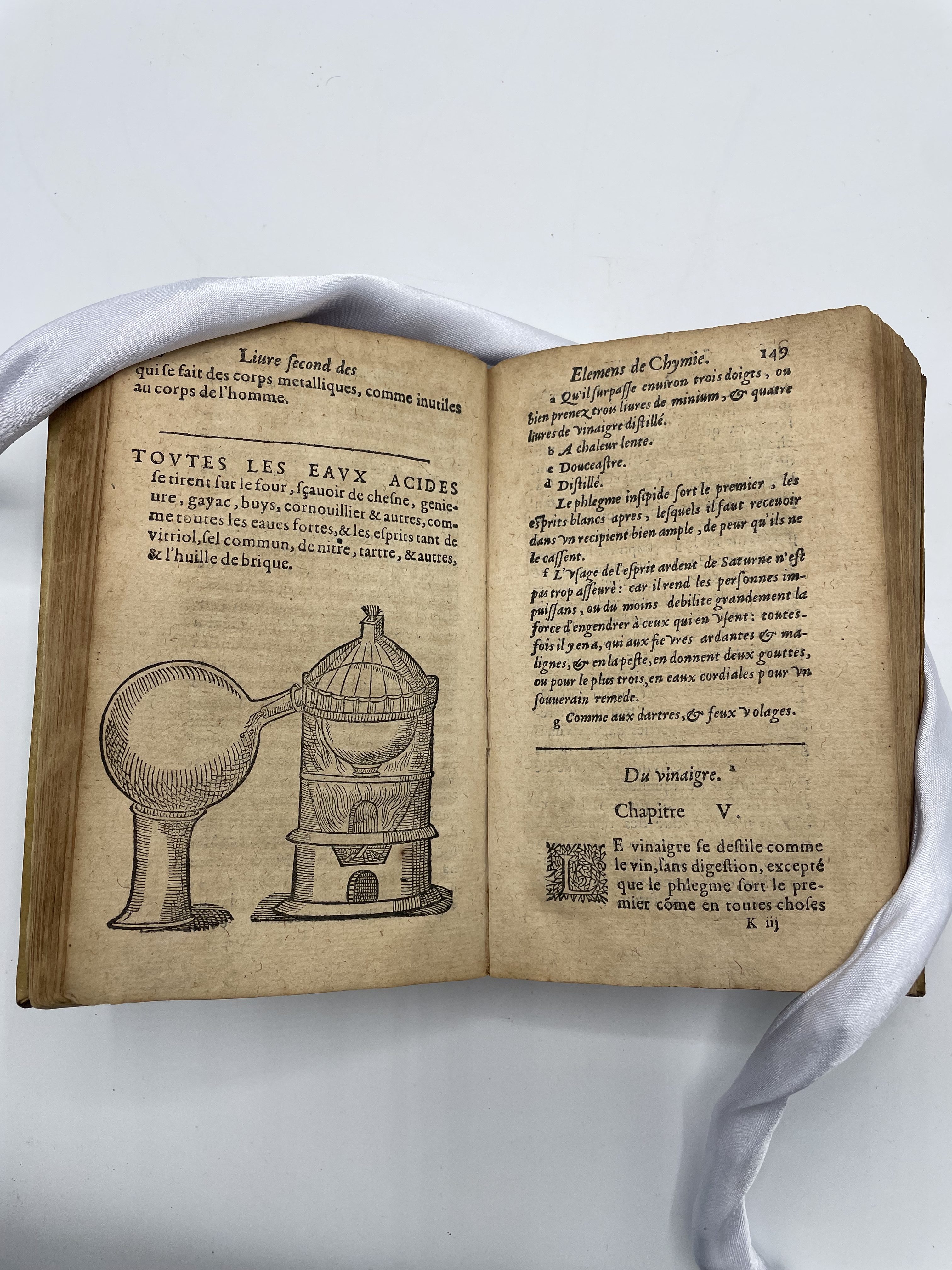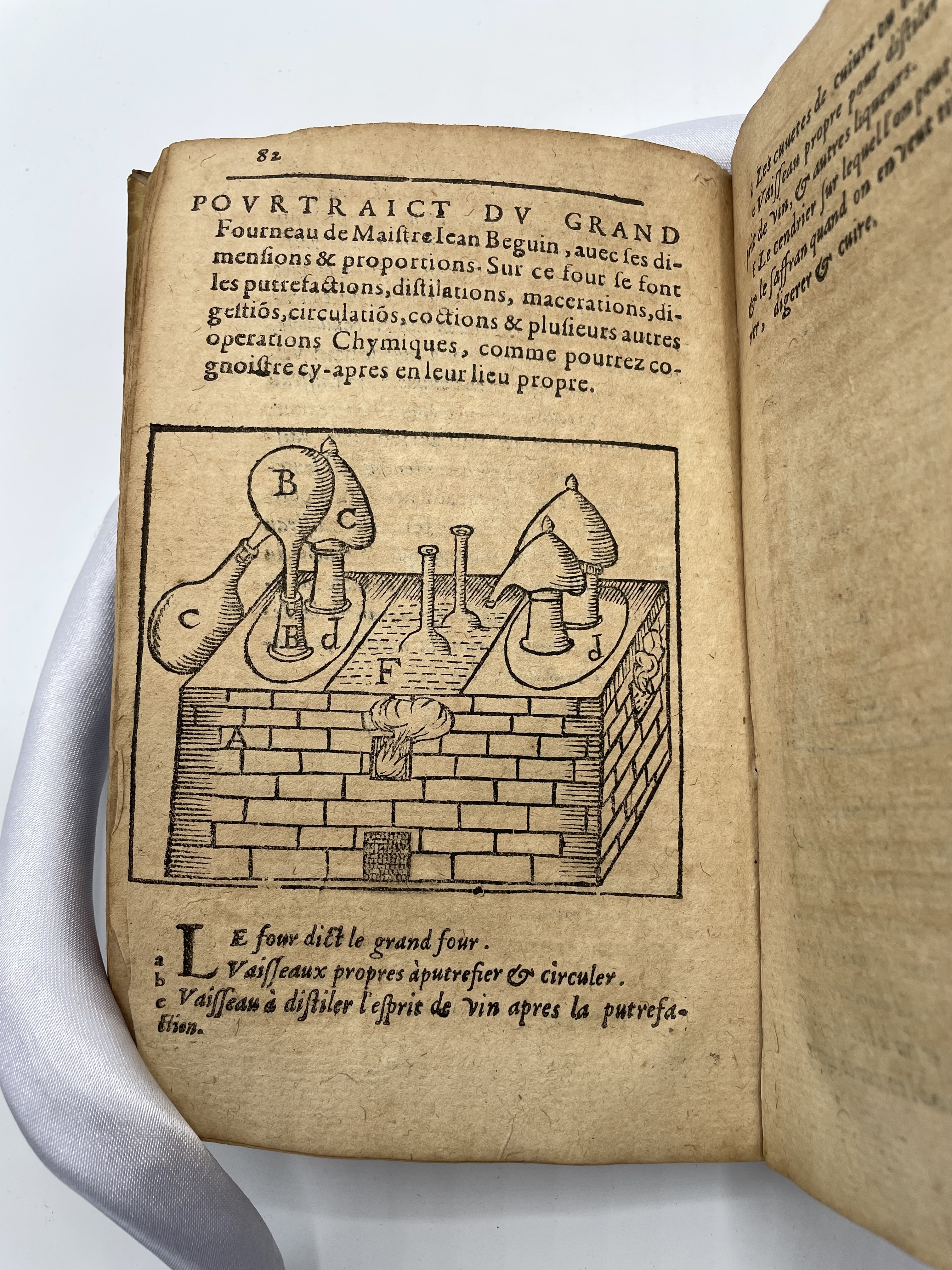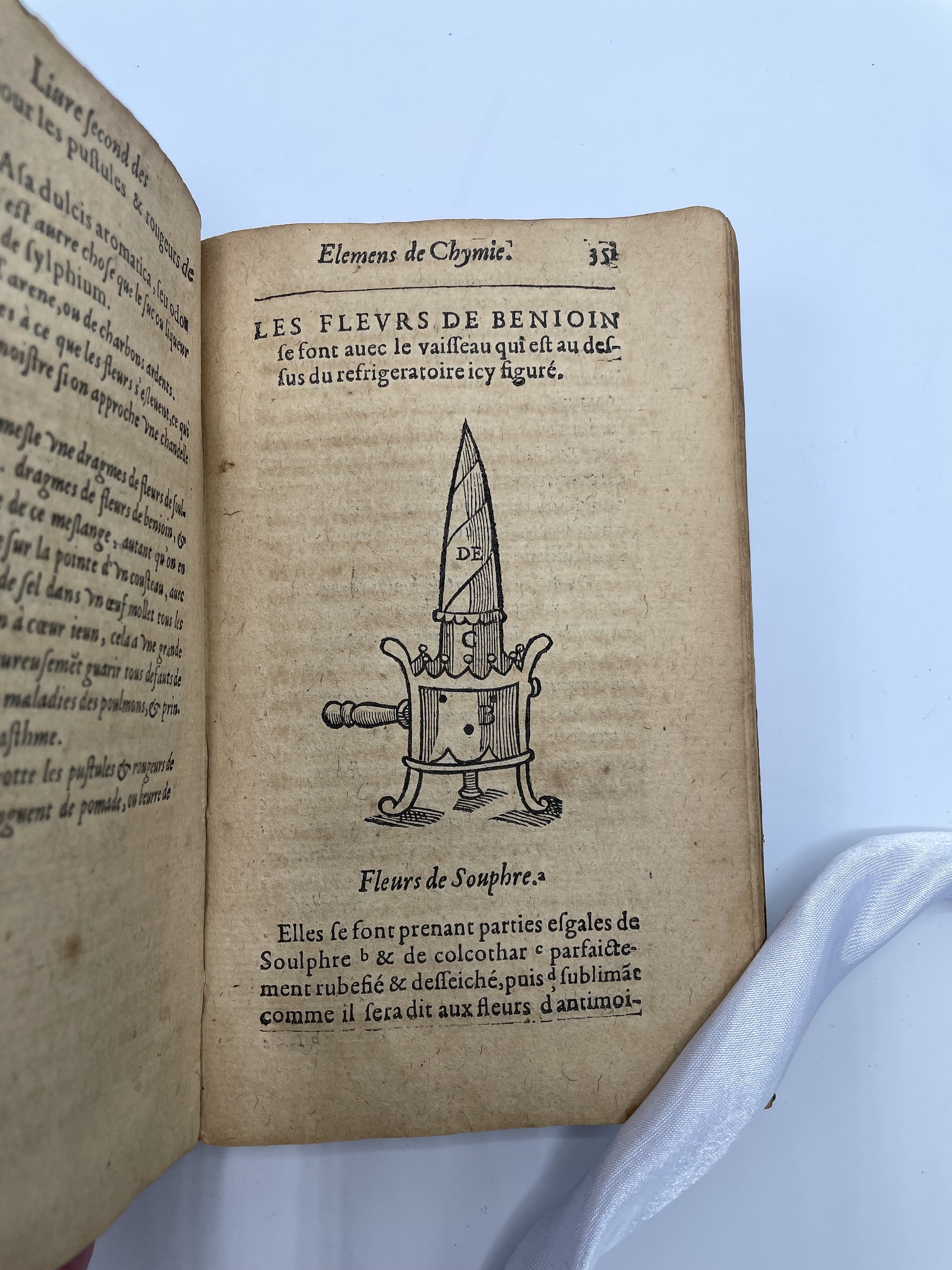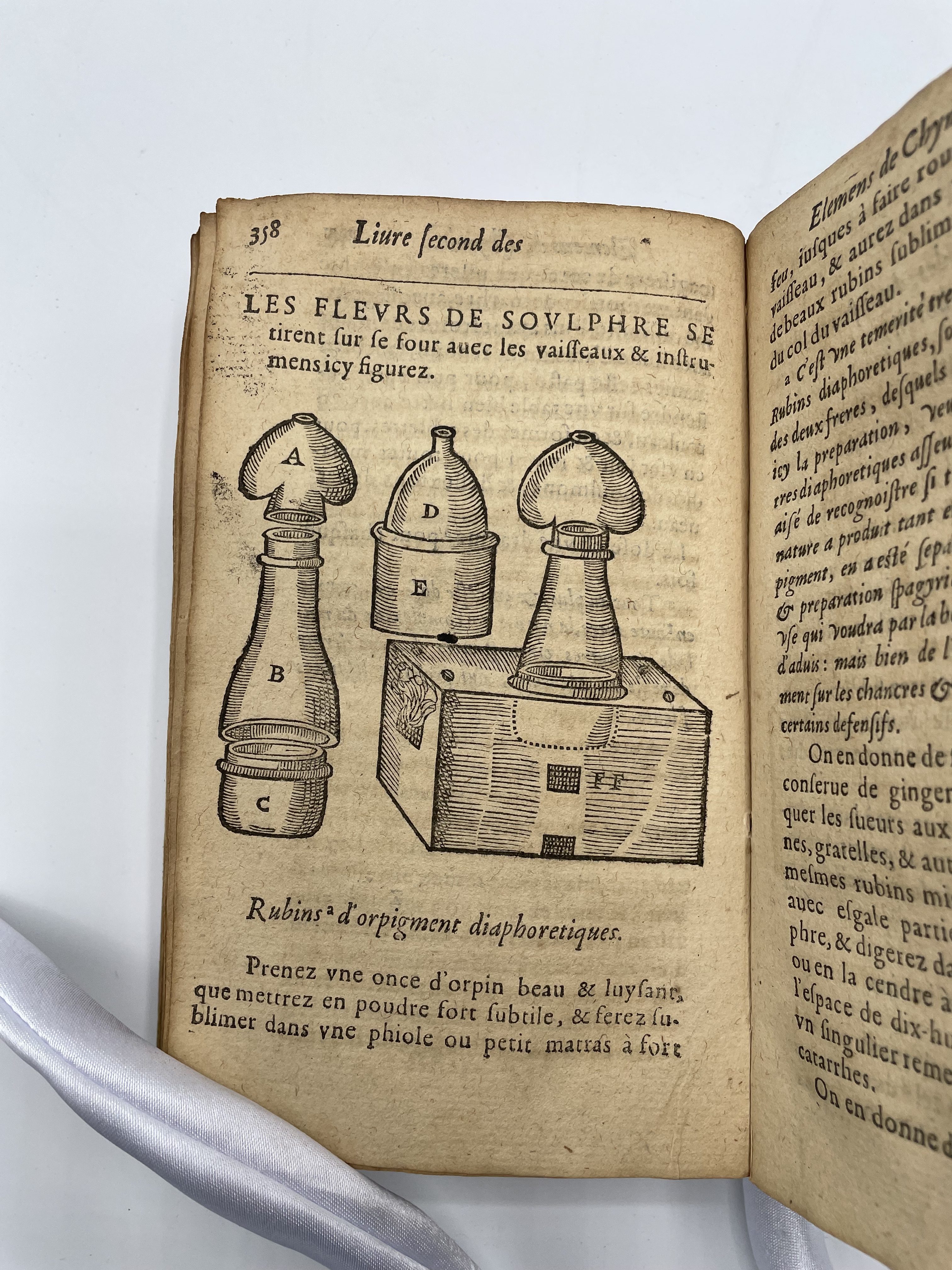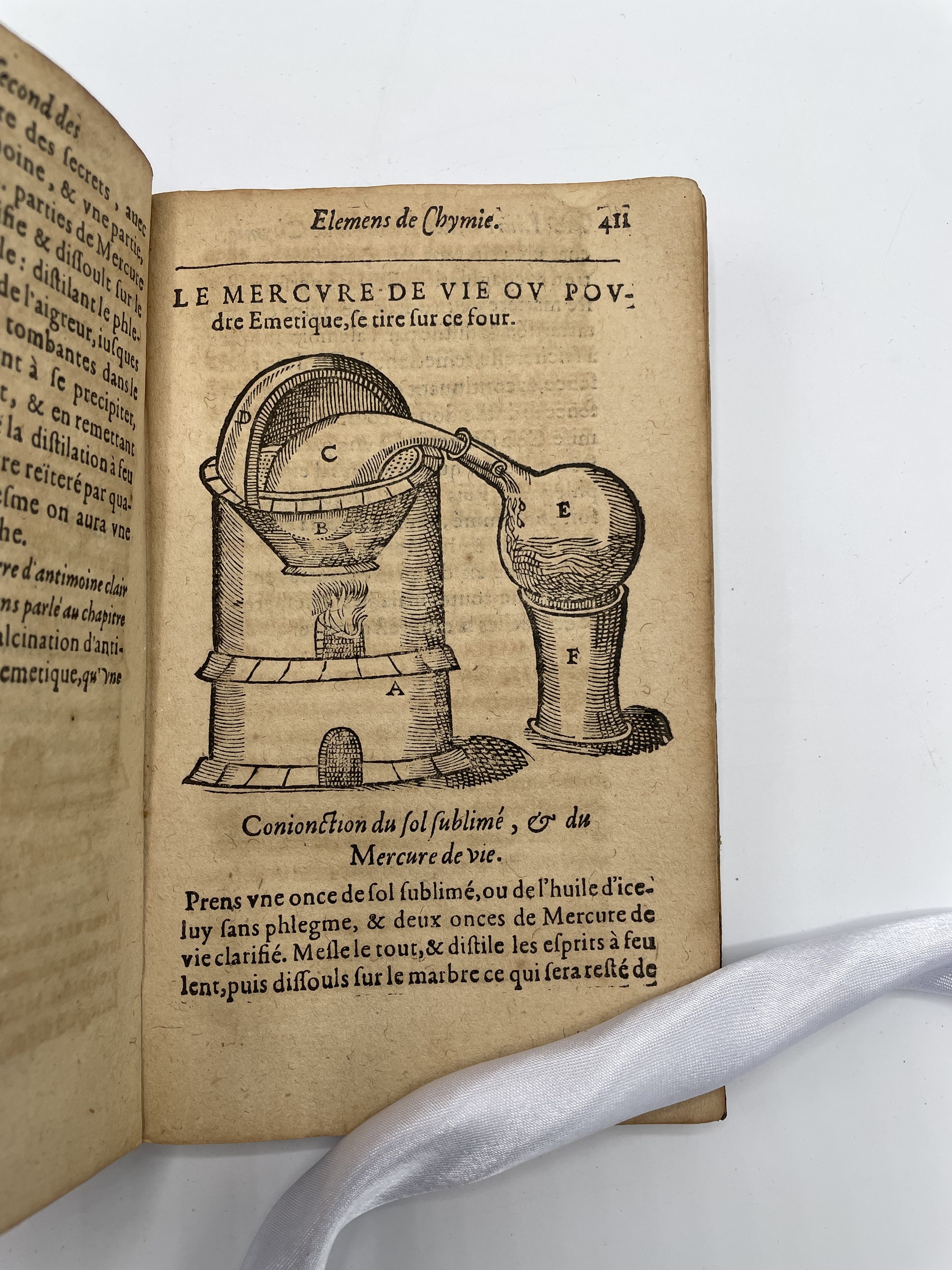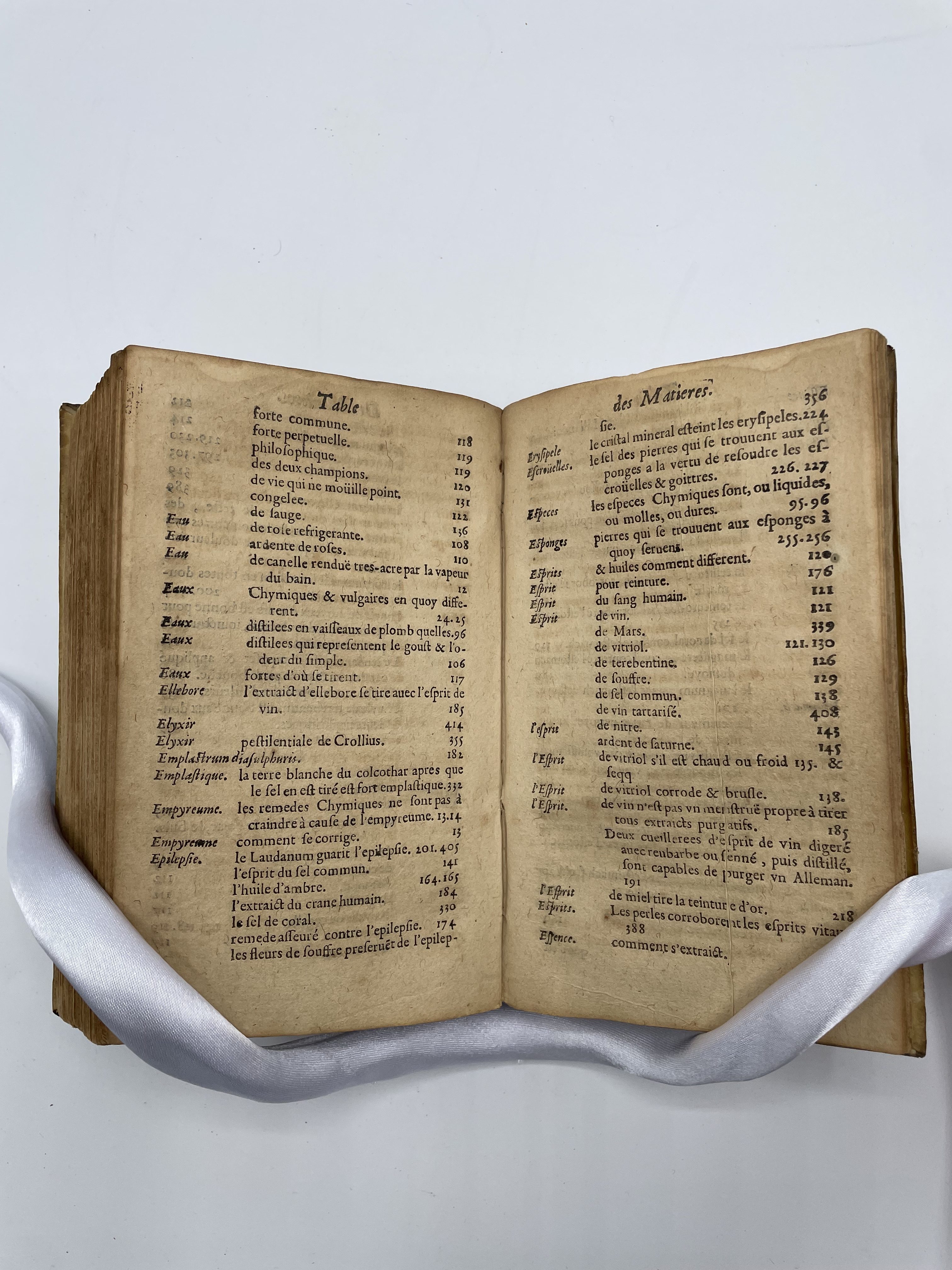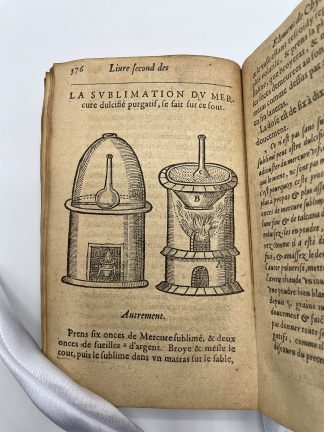BEGUIN, Jean; DE ROY, Jean Lucas.
FIRST ILLUSTRATED EDITION
Les Elemens de Chymie...
Paris, Mathieu Le Maistre, 1624.£2,250.00
8vo. pp. [16] 432 [48]. Roman and italic letter. Half page woodcut of chemical experiment and ms. ex libris ‘Bourdier Medici’ to t-p, 9 half page and one full page woodcut images of chemical equipment and experiments (margin shaved at foot), summarising diagram of the various components of chemistry and list of metals with astrological equivalents. Printed diagram of chemical reaction involving antimony to Q3, index at end. Contemporary armorial bookplate to front pastedown. Floriated initials and ornaments throughout. Age browned, poor quality paper, very occasional marginal staining, not affecting text. A good copy in contemporary vellum, author inked to lower edge.
First illustrated edition of ‘the earliest textbook’ on chemistry, which includes the first ever chemical equation diagram showing the results of a reaction where there are at least two reagents. The work is a landmark in the scientific transition between alchemy and chemistry; the latter was considered as practical knowledge, rather than a proper science, and its intellectual status quite low. This did not begin to change until the mid-17th century. As a result, early textbooks such as this were targeted at apothecaries, and many of the products are pharmaceutical.
Initially published in Latin in 1610, under the title Tyrocinium Chymicum, it followed Beguin’s visits to mines in Hungary and Slavonia in 1604. His French revision initially appeared in 1616 and was republished posthumously in 1624 following changes made by Jean Lucas De Roy, also known as the ‘medecin Boleducois’. ‘Lucas has taken it upon himself to add not only what is lacking in the rudiments, such as the structure of furnaces, shapes and uses of vessels, degree of heat of the fire, doses and administration of medicaments, but also many secrets from his own experience’ (Thorndyke, p.112). He believed that his additions would have been included by Beguin, had he not died before another edition could be completed. He notably adds a discussion on lutations.
The work is separated into 3 books, each with 24 chapters, typical for the later editions. He begins by defining chemistry and its objective, that is, to create remedies that are better tasting and safer to ingest. He continues to explain a variety of terms, including fermentation, putrefaction, digestion, menstruum, distillation, cohabation, spirit, circulation, filtration, deliquium, alkali, sublimation, calcination, cement, alcolismus, mastery, extract and quintessence. This is followed by the principles of distillation for various natural substances, before exploring the quintessence of blood, wine, pearls and coral. Thus it is the first illustrated version of the text, showing the reader a variety of equipment and experimental set ups, with helpful labels.
USTC: 6027711; Thorndyke p. 106-113; A. Clericuzio ‘Chemical Textbooks in the Seventeenth Century’; Welcome I: 753; not in Brunet or Ferguson.In stock


